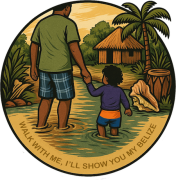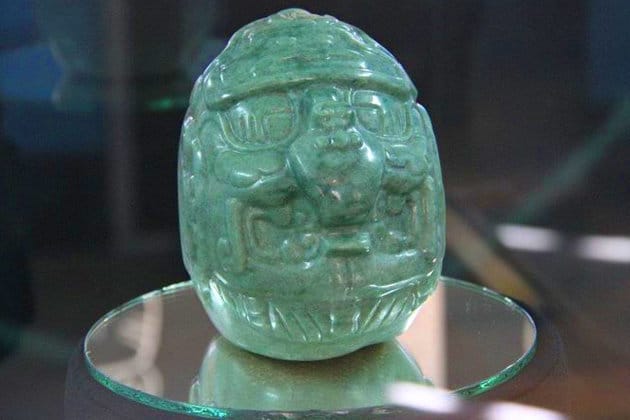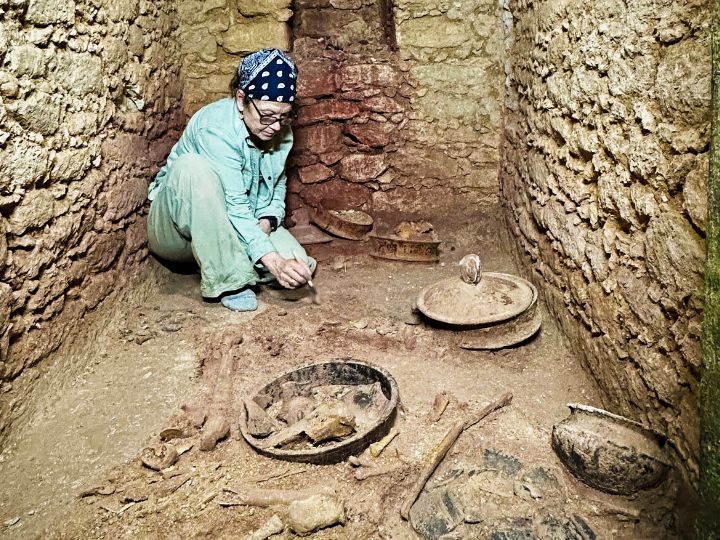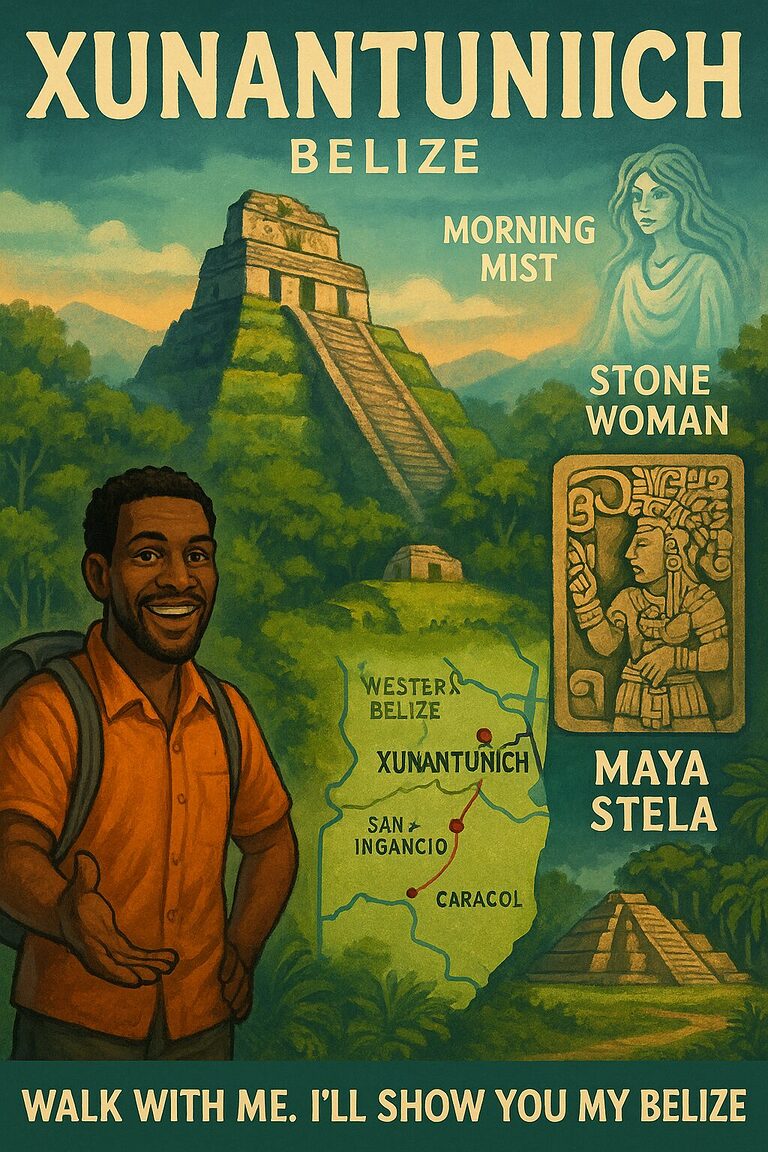Lubaantun Maya Ruins: Place of the Fallen Stones
Hidden in the foothills of the Maya Mountains lies Lubaantun — “Place of the Fallen Stones.” Though its major construction lasted for less than two centuries (730–890 AD), it became a thriving commercial and ceremonial center. Today it stands as the largest Maya site in southern Belize, with a beauty that lies not in ornate carvings but in its graceful, mortarless stonework.
A Trading & Cultural Center
Archaeological finds at Lubaantun reveal the site’s importance as a hub of exchange:
- Jade and obsidian from the Guatemalan highlands.
- Bones of deep-water marine animals, showing contact with the Caribbean coast.
- Musical instruments, especially carved whistles and flutes.
These discoveries suggest that Lubaantun was both an economic and cultural crossroads, where goods, music, and rituals all converged.
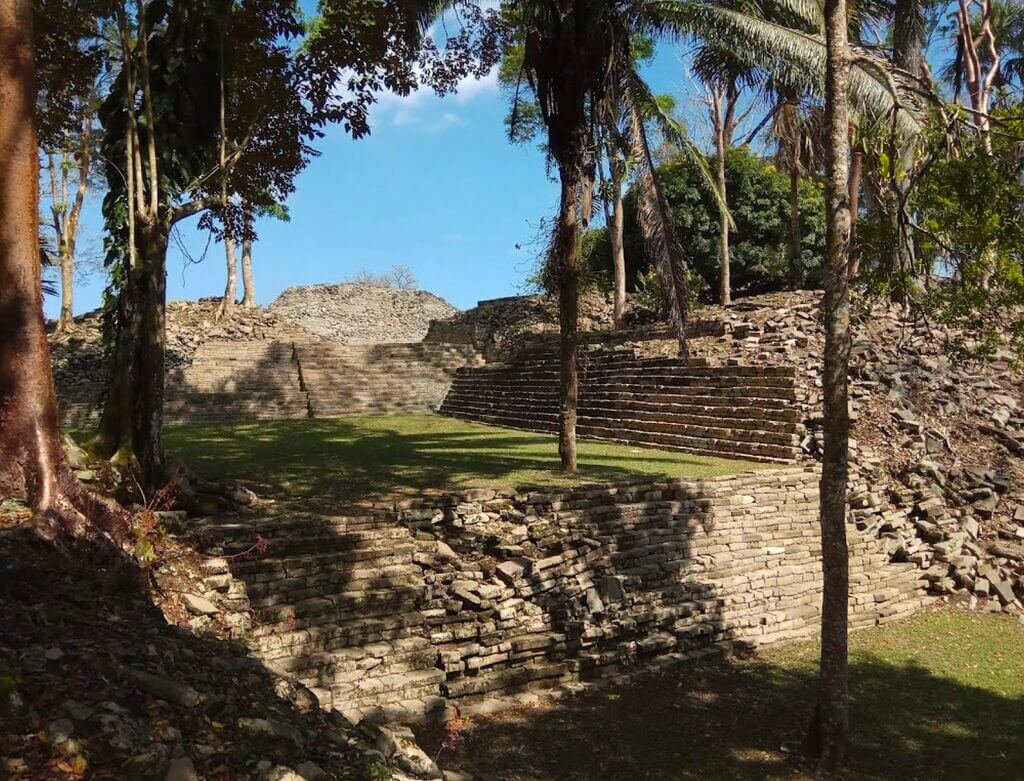
Layout & Architecture
Lubaantun consists of 11 major structures and three ballcourts arranged around five main plazas. Unique features include:
- Rounded corners and curved terraces, unlike the sharp angles at most Maya sites.
- Dry-stone construction — blocks fitted so precisely without mortar that they hold shape even in collapse.
- Plaza XII, a smaller, tucked-away space containing a covered altar, likely used for private offerings.
One structure from the site, Structure 12, is so iconic it appears on the Belize $2 bill.
Archaeology & Excavations
Lubaantun has a colorful excavation history:
- 1903 – Dr. Thomas Gann: His explosive methods left visible scars on Plaza IV.
- 1915 – R. Merwin (Harvard University): Identified ballcourts, recovered three carved ballgame markers (now at the Peabody Museum).
- 1926–27 – T.A. Joyce & Eric Thompson: Key early excavations. This was also the era when the infamous “Crystal Skull” surfaced.
- 1970s – Harvard & Cambridge Expeditions: Brought much of today’s archaeological understanding.
The Legend of the Crystal Skull
Lubaantun is forever tied to the story of the Mitchell-Hedges Crystal Skull, claimed to have been found here in the 1920s. While most archaeologists doubt the skull’s origins at the site, the legend has fueled decades of mystery and fascination, drawing spiritual seekers and tourists alike.
Ceremonies and the Maya Calendar
Though no carved stelae remain at Lubaantun, its plazas and ballcourts would have been alive with ceremonies timed to the sacred Maya calendar. The Tzolk’in cycle of 260 days guided planting, harvest, and ritual obligations. Each day carried its own energy and deity association, shaping when leaders held feasts, offerings, or ballgames.
Lubaantun’s fertile setting suggests that agricultural rituals — to bring rain, fertility, and renewal — were central to life here. Alignments of buildings and plazas may have echoed the turning of seasons, with ceremonies designed to keep the community in balance with time and the cosmos.
Myths, Gods, and Rituals
The gods of Lubaantun were the same ones revered across the Maya world: Chaac, the rain bringer, would have been called upon during ceremonies to ensure crops thrived. Itzamnaaj, the creator, and Ix Chel, the goddess of fertility and healing, may also have been honored in household and public rituals.
The presence of three ballcourts is striking. In Maya mythology, the ballgame symbolized the cosmic struggle between light and darkness, life and death. In the Popol Vuh, the Hero Twins played against the Lords of Death in the Underworld, a story that echoes every time a ballgame marker is uncovered. Lubaantun’s own ballgame stones, now kept at Harvard’s Peabody Museum, remind us that ritual at this site was tied to myth and cosmic drama.
Sacred Caves of Toledo
Caves in southern Belize have long been sacred to the Maya, seen as portals to the underworld (Xibalba) and dwelling places of gods and ancestors. Archaeologists have found ceramic vessels, bloodletting tools, and offerings in nearby caves — evidence of rituals that complemented the ceremonies held in Lubaantun’s plazas.
The site’s location, between the Maya Mountains, rivers, and hidden caverns, formed part of a sacred geography. For the Maya, mountains were witz (living beings), rivers were veins of the earth, and caves were openings to the spirit world. Lubaantun was not an isolated city but a node in this landscape of living, breathing power.
Continuity and Living Maya Presence
Today, the area around Lubaantun is still home to Mopan and Q’eqchi’ Maya communities. While the ancient city was abandoned over a thousand years ago, cultural threads remain unbroken. Ceremonies honoring the cycles of nature, respect for sacred hills and caves, and the use of traditional farming practices (milpa) all connect the present to the past.
Visiting Lubaantun isn’t just about looking back at ruins — it’s about sensing the continuity of a people whose relationship to land, time, and ceremony has endured.
Setting & Scenery
The site sits in the lush hills above the village of San Pedro Columbia. From the plazas, on clear days, you can face east and glimpse the Caribbean Sea in the distance. The setting is serene, with the sounds of the forest surrounding the ancient stone terraces.
Visiting Lubaantun Today
- Location: 2 miles from San Pedro Columbia, about 15 minutes from Punta Gorda.
- Access: Reached via paved road; final approach is by a short trail.
- Facilities: Visitor center and bathrooms on site.
- Opening Hours: 8:00 AM – 5:00 PM daily.
- Entrance Fee: ~BZ$10 (US$5).
- Best Time to Visit: Dry season (November–May), though the site is accessible year-round.
Unlike the more crowded northern sites, Lubaantun often feels peaceful and uncrowded, offering a chance to connect with history in solitude.
Why Lubaantun Is Unique
- Largest site in southern Belize.
- Rounded corners and curved terraces — architectural style found almost nowhere else.
- Strong associations with trade, ritual, and music.
- A mix of solid archaeology and enduring legend.
- Part of a sacred landscape with caves, rivers, and mountains.
